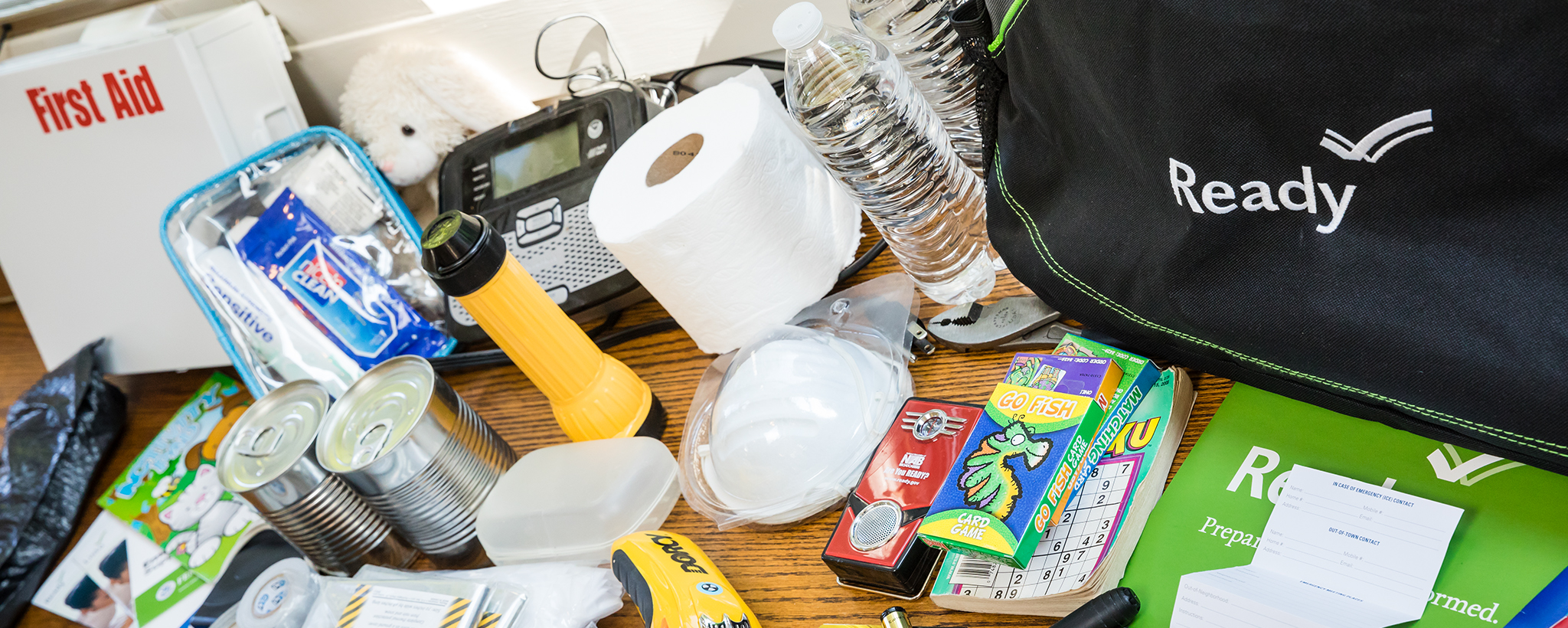Plan, Prepare, Dominate: Emergency Preparedness for Today's Challenges
Plan, Prepare, Dominate: Emergency Preparedness for Today's Challenges
Blog Article
How to Establish an Extensive Emergency Situation Readiness Plan
In the world of readiness, establishing a detailed emergency plan is not just a task to check off a checklist; it is an essential keystone of any type of organization or person's durability technique. By meticulously crafting a strategy that deals with various elements of emergency management, consisting of risk analysis, communication methods, resource allocation, and calculated decision-making, one can lay a solid structure for safeguarding properties, lives, and operations.
Relevance of Emergency Situation Readiness
Emergency preparedness is crucial for mitigating prospective threats and making sure the safety and security of people and neighborhoods. In today's world, where natural disasters, public health and wellness situations, and other emergency situations can strike without caution, being prepared can make a considerable distinction in decreasing the impact of these events. By having a well-thought-out emergency readiness strategy in place, people and companies can react effectively, secure lives, and lower home damages.
Among the key factors why emergency preparedness is important is its function in saving lives. When emergency situations take place, having a strategy that lays out clear treatments for communication, evacuation, and emergency situation response can help people act swiftly and decisively. This can protect against injuries and fatalities by making certain that individuals recognize what steps to take to stay secure
Additionally, emergency situation readiness enhances the durability of neighborhoods. By cultivating a culture of preparedness and preparation for numerous scenarios, neighborhoods can recuperate a lot more swiftly from catastrophes and disturbances. This resilience is vital for keeping stability, continuity of operations, and total wellness when faced with difficulty.
Assessing Possible Risks
Thinking about the value of being prepared for unanticipated occasions, the first action in developing an efficient emergency preparedness plan includes completely assessing and examining prospective dangers. This analysis needs a detailed testimonial of all feasible dangers that might impact the company, taking right into account variables such as area, sector, and historic information on occurrences. By determining these dangers, organizations can prioritize their preparedness initiatives and allot sources successfully to mitigate the most significant dangers.
Typical dangers that organizations might encounter include all-natural catastrophes like typhoons, quakes, or floods, technological threats such as power blackouts or information breaches, along with human-caused dangers like accidents or willful acts of violence. Conducting a threat evaluation also entails thinking about the prospective impact of these events on the company's operations, employees, consumers, and credibility. By conducting a comprehensive risk evaluation, companies can establish customized emergency action plans that resolve their specific vulnerabilities and make certain efficient readiness for any possible situation.
Producing an Interaction Strategy
Developing a clear and detailed interaction strategy is vital for effective emergency readiness within companies. In times of situation, communication plays an important duty in making sure the safety and security and well-being of workers, stakeholders, and the area. A well-thought-out communication strategy need to outline clear lines of communication, assign crucial employees responsible for communication tasks, and establish procedures for distributing details promptly and accurately.
One key element of producing an interaction strategy is recognizing primary and alternate communication channels (EMERGENCY PREPAREDNESS). These can consist of email, text messaging, phone trees, social media systems, and public address systems. It is important to ensure that these networks are reputable, accessible, and routinely examined to ensure their efficiency throughout emergency situations

Building an Emergency Kit
Provided the critical significance of readiness in times of crisis, a crucial part that companies have to address is the facility of an emergency kit. An emergency package offers as a crucial resource that can help mitigate the impact of unexpected events, making sure that necessary products and devices are easily offered when required most. When setting up an emergency situation set, it is necessary to take into consideration the details needs and circumstances of the company. Standard products such as water, non-perishable food, very first help materials, flashlights, batteries, and a battery-powered radio are essential elements of any type of emergency situation set. Furthermore, companies need to consist of vital records, such as call checklists, insurance policy details, and emergency situation feedback strategies, in water resistant containers within the set. Consistently assessing and upgrading the components of the emergency package is necessary to make certain that products are existing and practical. By proactively keeping an emergency and constructing set, organizations can boost their preparedness to effectively reply to dilemmas and guard their possessions and personnel.
Developing Evacuation Procedures
To make sure the safety and organized evacuation of workers throughout emergency situations, organizations have to establish effective and clear evacuation procedures. Discharge procedures ought to include a variety of possible scenarios, including fires, natural catastrophes, or various other emergency situations that call for speedy discharge.

In addition, organizations must develop a system for accountancy for all employees during a discharge to ensure that every person has actually securely exited the facilities. Communication plays an important function in evacuation procedures, with clear guidelines on just how to evacuate and when to do so. Regular evaluation and updating of emptying treatments based upon responses and changing situations are important to keeping the effectiveness of the plan.
Conclusion
In final thought, establishing a detailed emergency situation preparedness plan is essential for making sure the safety and security and health of people in case of a calamity (EMERGENCY PREPAREDNESS). By assessing potential risks, creating a communication plan, constructing an emergency situation kit, and developing discharge people, treatments and companies can be better geared up to respond successfully to emergency situations. It is very important to prioritize readiness initiatives to alleviate the impact of catastrophes and secure lives and property
In the realm of readiness, creating a detailed emergency plan is not just a job to inspect off a listing; it is a vital foundation of any type of organization or person's durability technique. When emergencies occur, having a strategy that lays out clear procedures for emptying, communication, and emergency action can assist people act quickly and decisively. news. By conducting a detailed risk analysis, organizations can create tailored emergency reaction strategies that resolve their certain vulnerabilities and make sure efficient readiness for any kind of possible crisis
Developing a detailed and clear communication strategy is vital for efficient emergency preparedness within companies. By assessing potential risks, creating a communication plan, building an emergency kit, and developing emptying individuals, treatments and organizations can be much better geared up to respond efficiently to emergencies.
Report this page